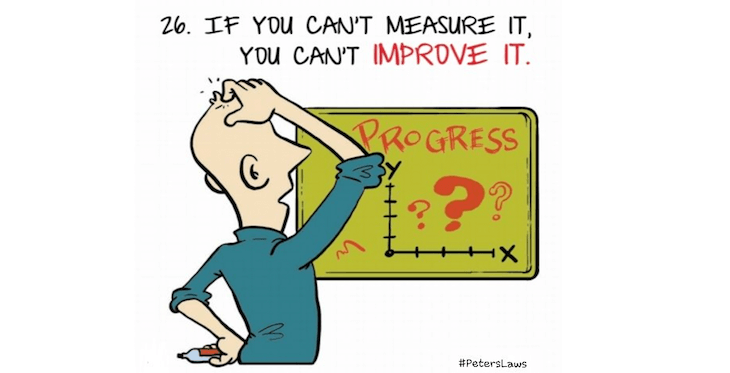In 2020, I joined AppsFlyer as Product Director, Gaming. My primary focus is on growth-driving projects in areas such as product development, business development, and go-to-market strategy. In my role, it’s exciting to use my technical experience from a range of different sectors, including a six-year tenure in IT support for the Formula 1 team, Williams.
Mobile users must now actively opt-in to sharing their data with marketers, following Apple’s enforcement of the App Tracking Transparency (ATT) framework in 2021. For gaming apps, the overall global ATT opt-in rate is 45%, changing how marketers measure campaigns, engage users, and improve brand relationships with users.
Tell us about your role, and how it fits into the wider company?
I have a product-centric focus at AppsFlyer, both in terms of developing our own solutions internally, as well as helping our gaming clients better understand what strategies and products are best for them. I’m responsible for fuelling the growth of our gaming offering across EMEA and LATAM, while also working alongside our Israeli squad on gaming innovation.
Finally, marketers should continue to focus on improving ATT opt-in rates, by experimenting with the timing and text of the prompt, as well as improving their overall brand affinity to build trust with the consumer. Even a 1% increase in opt-in rate could have a significant impact.
Advertising
What are your favourite apps and why?
It’s a truly inspiring time for innovation and AppsFlyer is no stranger to that space. With all the changes in the mobile landscape of late, there are many opportunities to enhance our offering for marketers and studios as a whole.
In addition, with hyper-targeted ads based on user-level data becoming a thing of the past, we’ll see a rise in contextual advertising. To succeed in this world, marketers will need to take a closer look at who their target demographic is, and how and where they’re connecting with them. Fine-tuning creative and ensuring it’s as relevant as possible to the audience will be critical.
As the industry adapts to new privacy norms, what should mobile marketers be focusing on in terms of data and measurement in 2022?
Actively contributing to the development of the gaming industry. As a kid, I grew up with Sega and Nintendo so I’ve always had a strong interest in this space. At AppsFlyer, I now spend my time discussing major trends and harnessing their potential with some of the largest gaming companies around as well as on our podcast, In the sandbox with…. This is a huge achievement for me, and it’s something I’m passionate about pursuing on both a professional and a personal level.
Privacy cloud is a perfect example of this innovation in action, as it enables marketers and their partners to bring data together in a privacy-first way. Powered by data clean rooms and aggregated conversion modelling, it offers marketers a clear view of campaign impact without relying on user-level data. By allowing marketers to define the privacy regulations that their business operations must adhere to, it lets them effectively collect, enrich, and analyse their data in a fully compliant manner. With accurate insights, they can deliver more informed ad creative and boost campaign performance.
In this new, privacy-focused world, where marketers can no longer rely on user-level measurement, it’s time to rethink the KPIs used to measure success. For example, metrics like overall cost per install and reinstall, or predicting long-term performance – such as day 7 return on ad spend – based on the 24 hour conversion value.
I lead discussions with industry professionals to understand where their companies are headed, what their key challenges are, and what they need to achieve their business goals. As AppsFlyer takes a holistic approach to performance marketing, I’m now starting to work with influencers to learn about their role in driving the rate of app installs. With the mobile landscape being so dynamic and each business having its own unique objectives, no two days are the same for me.
What mobile ad formats do you foresee generating further growth?
I’m a huge fan of strategy games such as Clash of Clans, which probably stems from enjoying Age of Empires back in the day. My game of the moment is Raid: Shadow Legends, as it has so many intricacies, combinations of characters, and specific gear that’s needed to take on different bosses. You end up becoming a mathematician to work out turn orders to succeed.
Over the next couple of years, I expect to see the growth of in-game ads as they bring users more seamless advertising experiences. In football games, for instance, billboards in stadiums can be used to serve real-time ads, aligning mobile advertising with its “real world” counterparts. This tactic is a great way to maximise gaming’s potential as a platform for advertising, because the ads harmonise with the surrounding environment and create an impact while respecting the gamer’s experience and immersion.
What has been your biggest professional achievement to date?
I also believe we’ll see a lot of success from viral games this year. Angry Birds arguably started this trend, but when masses of people want to play and share a trending game, it’s a phenomenon in the mobile space. Titles such as Among Us and PUBG Mobile demonstrate how efficacious these games continue to be, so I predict they will attract further ad spend. In addition, new opportunities for organic growth can be seen with the “streamer” generation on Twitch and YouTube as well as communities on Reddit and Discord.
What’s next for AppsFlyer? What are you excited about?
I’d have to say gaming apps. Mobile games are so easy to pick up and play — they’re intuitive, accessible, and undoubtedly creative. Gaming apps allow developers to innovate and experiment with new concepts to engage their users, whether that’s through graphics, design, sound, storylines, or the overall experience.

Adam Smart is Director of Product, Gaming at AppsFlyer – the mobile marketing analytics and attribution platform. I chatted with Adam to find out more about his role, plus his opinion on growing ad formats, data measurement, and user privacy.






